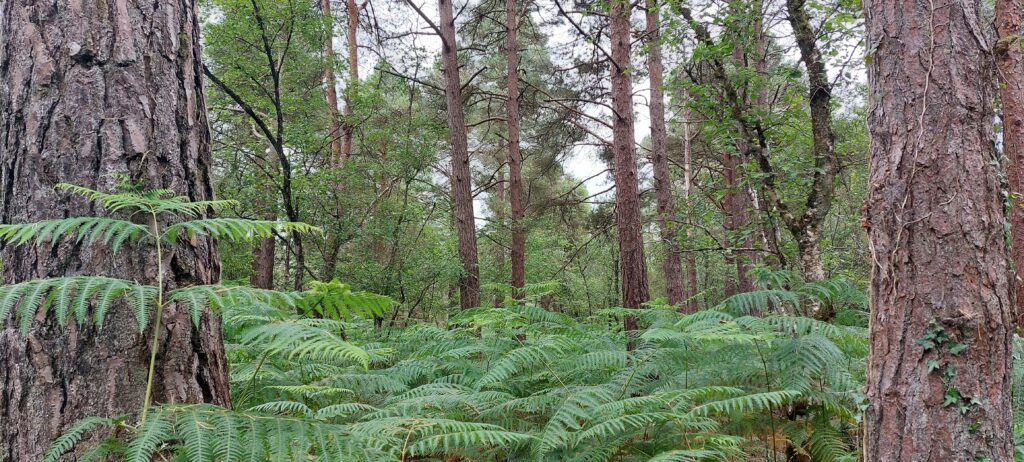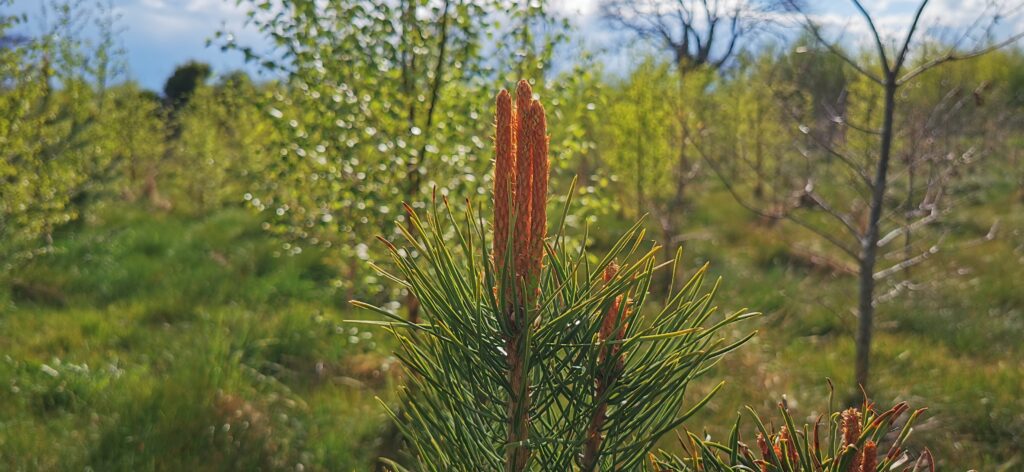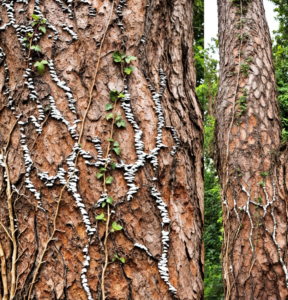
15 Aug Can Scots Pine Save Irish Forestry?
Can Scots Pine Save Irish Forestry?
The forestry industry in Ireland faces significant challenges, with declining biodiversity, concerns about monoculture plantations, and the need for sustainable timber sources driving a search for solutions. Among the potential saviours of this sector is a tree species that has already proven its worth across the Irish Sea: Scots pine (Pinus sylvestris). In the 1930’s it was favoured as the main conifer species to plant by the State, but today this versatile species makes up just 1.2% of Ireland’s forest area. Known for its resilience, environmental benefits, and versatile timber, this beautiful species could play a pivotal role in revitalizing Ireland’s forestry industry.
Environmental and Ecological Benefits of Scots Pine Forests
Sometimes called Scotch pine, it is a native species to Ireland and much of Europe, and has been a cornerstone of Scottish forestry for centuries. Its resilience and adaptability have allowed it to thrive in a range of climates and soil types, making it an excellent candidate for reforestation efforts in Ireland.
One of the primary environmental benefits of Scots is its contribution to biodiversity. In Scotland, these forests provide a habitat for a rich array of wildlife, including iconic species like the capercaillie, red squirrel, and the Scottish crossbill. These forests create a mosaic of different habitats, supporting a variety of plant and animal life that are often absent in monoculture plantations dominated by non-native species such as Sitka spruce.
Scots pine forests also play a crucial role in carbon sequestration, helping to mitigate climate change. Mature Scots pines can store significant amounts of carbon, both in the trees themselves and in the forest floor’s rich organic matter. As global efforts to combat climate change intensify, the role of forests in capturing and storing carbon has never been more critical. Establishing our native conifer forests in Ireland could contribute to the country’s carbon reduction targets while also enhancing its natural landscapes.
Moreover, Scots pine is well-suited to a variety of land types, including poor soils where other species might struggle. This adaptability makes it an ideal choice for reforesting marginal lands in Ireland that have been degraded or are unsuitable for agriculture. By restoring these lands with Pinus sylvestris, Ireland can improve soil quality, reduce erosion, and enhance water retention, all while creating valuable forest ecosystems.
Lessons from Scotland: The Success of Scots Pine
Scotland’s experience with Scots pine offers valuable lessons for Ireland. The species has been a cornerstone of the Scottish forestry industry, not only because of its ecological benefits but also due to its economic potential. Scots pine timber is highly valued for its strength, durability, and versatility. It has been used for everything from construction to furniture, fencing, and even shipbuilding.
One of the key advantages of Scots pine timber is its quality. The wood is known for its straight grain, ease of working, and resistance to decay, making it a preferred material in many industries. In Scotland, Scots pine has traditionally been used in house construction, flooring, and joinery, where its aesthetic appeal and strength are highly prized. Additionally, it is often used in outdoor applications such as fencing and decking, where its natural resistance to weathering is a significant asset.
In recent years, there has been a renewed interest in Scots pine in Scotland as part of broader efforts to promote sustainable forestry. With concerns about the environmental impact of non-native tree species and the decline of native woodlands, Scots pine has been increasingly recognized as a key species for sustainable forest management. By focusing on Pinus sylvestris, Scottish foresters are working to create forests that are more resilient to pests, diseases, and climate change, while also supporting biodiversity and providing high-quality timber.
The Case for Scots Pine in Ireland
For Ireland, embracing this native pine could address several pressing issues within its forestry industry. The current reliance on non-native species like Sitka spruce has led to concerns about biodiversity loss, ecosystem degradation, and the vulnerability of monoculture plantations to pests and diseases. Introducing Scots as a significant component of Ireland’s forestry strategy could help diversify the species mix, creating more resilient and ecologically valuable forests.
Scots pine’s ability to grow on a range of soil types, including nutrient-poor and acidic soils, makes it a versatile option for various landscapes across Ireland. Whether planted on upland areas, peatlands, or degraded agricultural lands, Scots pine could contribute to the restoration of these environments while also providing a valuable timber resource.
Moreover, the economic benefits of Scots pine should not be overlooked. As the demand for sustainable and locally-sourced timber grows, Scots pine could provide a reliable supply of high-quality wood for the Irish market. Its versatility means it could be used in construction, furniture making, and other industries, reducing Ireland’s reliance on imported timber and boosting the local economy.
Scots pine and the Irish Forestry Programme 2023-2027
Despite its obvious benefits and advantages, Forest Service has put very little emphasis on Scots pine in the new Forestry Programme 2023-2027. For Native Woodland establishment, it is basically relegated to a nurse species, comprising a maximum of 30% planted in ‘small pure groups’ which would never produce timber. Or, it can be planted as a ‘Diverse Conifer with minimum 20% broadleaves’, attracting the same small premium payments as notorious species such as Lodgepole pine and Lawson cypress, but with a far longer, unattractive rotation.
Where is the recognition of Ireland’s most versatile native conifer’s combined environmental and commercial values?
Challenges and Considerations
While Scots pine offers many potential benefits, its introduction to Ireland’s forestry industry would require careful planning and management. Ensuring the success of Scots pine plantations would involve selecting appropriate sites, managing pests and diseases, and fostering a market for Scots pine timber. Additionally, public awareness and support for native species reforestation efforts would be crucial to gaining momentum for such a transition.
In conclusion, Scots pine holds significant promise for the future of the Irish forestry industry. By drawing on the successes seen in Scotland, Ireland could cultivate forests that not only enhance biodiversity and combat climate change but also provide a sustainable and valuable timber resource. With careful management and a long-term vision, Scots pine could indeed become a cornerstone of a revitalized and resilient Irish forestry sector.
Note:
I love Scots. It’s a native species, a handsome tree, a beautiful timber, has enormous biodiversity values, and stores lots of carbon. I’ve planted over 20 thousand of them in the last 10 years or so.
But am I missing something? Where’s the love, where’s the support, lobby groups, or campaigns? Is Scots pine the innocent victim of the ignorant ‘conifers bad’ mentality?
If you’re interested in planting some Scot’s, or any Native Woodland, just make contact for more info.
You can read about the latest Forest Service Schemes small print on the Department of Agriculture / Forest Service Website




